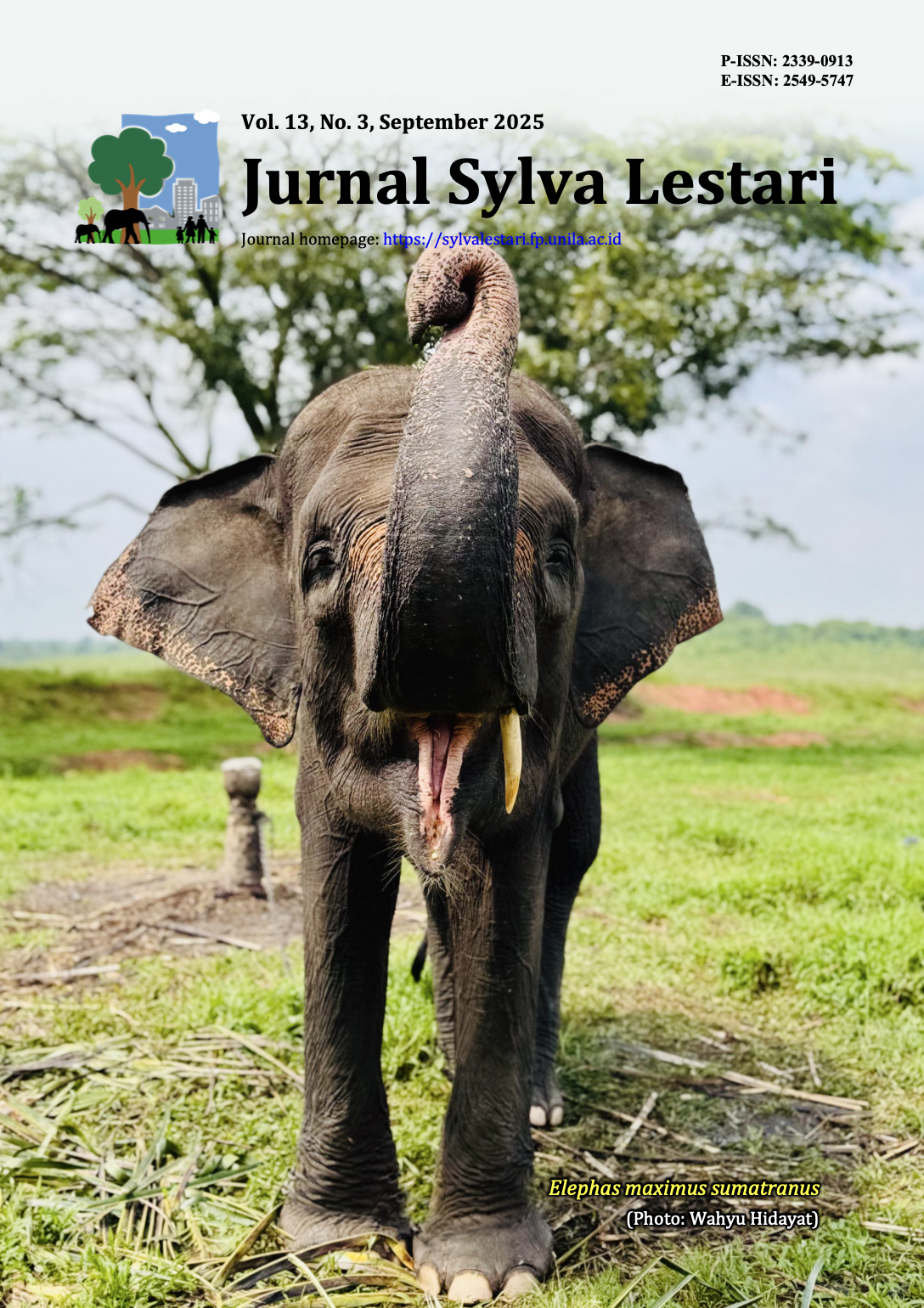Effects of Tree Spacing on the Physical and Mechanical Properties of 24-Year-Old Tectona grandis Wood in Longuza Forest Plantation, Tanzania
DOI:
https://doi.org/10.23960/jsl.v13i3.1154Abstract
This study investigated the effects of initial tree spacing on the physical and mechanical properties of 24-year-old teak (Tectona grandis) in Longuza Forest Plantation, Tanzania. Three spacing treatments (2 m × 2 m, 3 m × 3 m, and 4 m × 4 m) were evaluated using a randomized complete block design with three replications. Physical properties assessed included wood density (D) and heartwood percentage (HWP), while mechanical properties comprised modulus of elasticity (MOE), modulus of rupture (MOR), compressive strength parallel to the grain (CSP), shear strength parallel to the grain (SS), and cleavage strength (CLS). Results showed that spacing had no significant effect (p > 0.05) on most physical and mechanical properties, except for SS and tangential CLS at specific height levels. Although non-significant, D, MOE, MOR, CSP, and CLS tended to decrease with increasing spacing, whereas HWP and SS exhibited variable trends. The highest mean values for D (0.57 g/cm³), MOE (8,588 N/mm²), MOR (90.78 N/mm²), CSP (49.41 N/mm²), and CLS (14.83 N/mm) were observed at a 2 m × 2 m spacing, while the lowest values generally occurred at the widest spacing (4 m × 4 m). The findings suggest that closer spacing may enhance wood quality by promoting higher wood density and strength, although differences were not statistically significant. These results provide insights for silvicultural management of T. grandis plantations, suggesting that a 2 m × 2 m spacing may be preferable for optimizing physical and mechanical wood properties at older stand age.
Keywords: heartwood percentage, modulus of elasticity, modulus of rupture, spacing, Tectona grandis, wood density
Downloads
Downloads
Published
How to Cite
Issue
Section
Statistics
 Abstract views: 171 times
Abstract views: 171 times PDF downloaded: 189 times
PDF downloaded: 189 times
Metrics
License
Copyright (c) 2025 Enos Samamba, Japhet Noah Mwambusi, Shabani Athumani Omari Chamshama

This work is licensed under a Creative Commons Attribution-NonCommercial 4.0 International License.
Authors retain copyright and grant the journal right of first publication with the work simultaneously licensed under a Creative Commons Attribution-NonCommercial 4.0 Licence that allows others to share the work with an acknowledgement of the work's authorship and initial publication in this journal.
Authors are able to enter into separate, additional contractual arrangements for the non-exclusive distribution of the journal's published version of the work (e.g., post it to an institutional repository or publish it in a book), with an acknowledgement of its initial publication in this journal.
Authors are permitted and encouraged to post their work online (e.g., in institutional repositories or on their website) prior to and during the submission process, as it can lead to productive exchanges, as well as earlier and greater citation of published work (See The Effect of Open Access).









